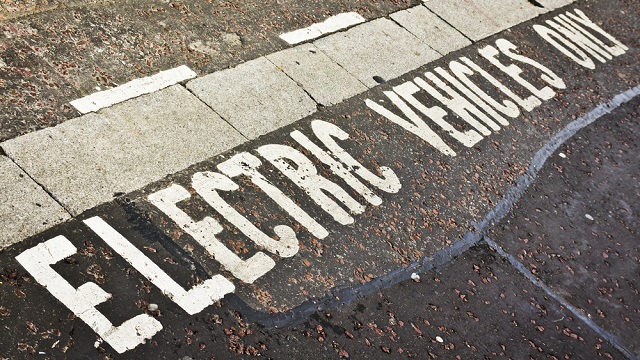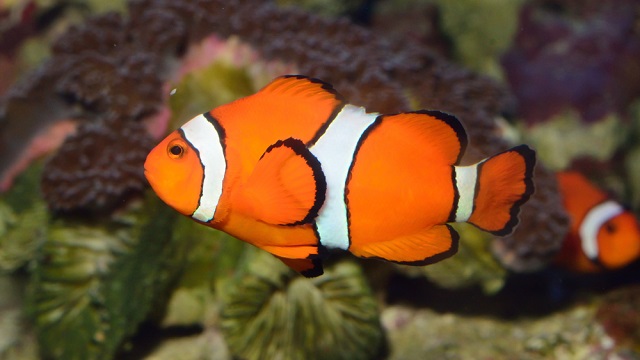Kecia Lynn
Kecia Lynn has worked as a technical writer, editor, software developer, arts administrator, summer camp director, and television host. A graduate of Case Western Reserve University and the Iowa Writers' Workshop, she is currently living in Iowa City and working on her first novel.
This week a New Jersey state appeals court determined that if a person knowingly sends a text to someone who’s driving, and the driver is involved in an accident as a result, the texter could be held liable.
The year-old startup, which operates in San Francisco and Austin, has many plans for people’s mail, not the least of which is “making [it] as sortable and searchable as email.”
The road-side exterior wall of a hotel in one flood-prone London district is covered with a 21-foot-high vertical garden that acts as a “350-square-meter green sponge.”
Adam Conway’s custom-built drone only cost about US$100 to make, and although it still needs a bit of work, the technology behind it could prove useful in a variety of situations.
The project is a collaboration between the city’s public transportation authority, a bookstore and an online education provider. Riders can pick up a book at one stop and drop it off at another.
In an attempt to dial down sex trade street traffic, the city erected an outdoor compound on an industrial site. It consists of drive-in “sex boxes” with special precautions built in to protect prostitutes from predatory clients.
A new study suggests that the necessary ingredients for life existed on Mars first, back when it was far more hospitable than it is now, and arrived here via a meteorite.
University of Nevada-Reno engineers have created a composite of nickel titanium — the material that gives eyeglass frames their flexibility — that can reinforce and stabilize bridges better than traditional steel and concrete.
The University of Newcastle plans to build a plant that will test a method of converting carbon emissions to inert “bricks” that could eventually be used in construction.
First discovered in 2004, the as-yet-unnamed element will eventually occupy a spot in the periodic table between two other elements that got their official names just last year.
Discovered in the constellation of Capricornus with the help of the Very Large Telescope (VLT), HIP 102152’s characteristics confirm longstanding scientific speculation about how stars like ours age.
According to government estimates, over half a million young people between the ages of 12 and 18 have problems with Internet addiction. The program will address the severe lack of treatment available from public and private institutions.
Some financial companies look at potential borrowers’ social media footprint — including their friends and, eventually, their friends’ credit scores — to determine whether they qualify.
A California school district says that safety is the reason why it hired tracking company Geo Listening to monitor students’ posts.
As people search for ways to make their passwords more secure, the makers of a free tool announce that their code can now crack passwords of as many as 55 characters in length in a radically short period of time.
Nordic Choice CEO Petter Stordalen laid down the new law after becoming involved with UNICEF’s campaign against child trafficking and exploitation.
Sleep disorder specialists are calling attention to a new trend that, while less dangerous than sleep-driving, still represents a potential health concern.
A pair of MIT doctoral candidates came up with a way to reduce excessive Internet usage by creating a keyboard accessory called, unsurprisingly, “Pavlov Poke.”
Researchers discovered that people are hard-wired to see no-longer-intact items — a torn piece of paper, for example — as trash and treat it accordingly.
The ethics of “first contact” was the subject of a panel discussion at last week’s Starship Congress, where attendees hashed out the logistics and consequences of becoming an interstellar civilization.
The success of Paris’ program has helped to make it an EV mecca, and similar programs are now being planned for other locations, including Indianapolis. However, it’s unclear whether they will increase EV popularity overall.
American and European researchers are currently testing a procedure that uses generic fertility drugs and simpler equipment and could end up costing less than US$300.
South Korean researchers unveiled the aptly-named — and extremely expensive — Armadillo-T prototype earlier this week. When folded, it takes up only one-third of a 5-meter parking space.
Two Chalmers University of Technology students designed a nearly-all-steel chair with alternating seat positions that give users better leverage when navigating down unpaved roads and around other obstacles.
University of Washington researchers hope to create a battery-free Internet of Things by developing communication devices that transmit data with the help of existing ambient electromagnetic energy.
One spritz of Sprayable Energy onto the skin delivers the caffeine equivalent of a quarter-cup’s worth of coffee. Developers Ben Yu and Deven Soni say they want to pitch it to people who are trying to regulate their intake.
First launched in 2009, the Wide-field Infrared Survey Explorer (WISE) spacecraft has been asleep in polar orbit for two years. Next month, it’ll be turned back on to help locate potentially dangerous near-Earth objects.
More of them are appearing on some Kentucky streets as residents look for gas-friendlier alternatives. Also, most states already have laws allowing them to share certain roads with regular traffic. Writer Eric Jaffe asks: Why golf carts and not electric cars?
Sea anemones, which provide shelter for the clownfish and other fish species, are dealing with the same ecological threats as coral reefs as water temperatures continue to rise.
A new study suggests yes: Since the introduction of the tax in 2008, fuel consumption per person has dropped over 17 percent and the emissions rate has gone down by 10 percent.





























